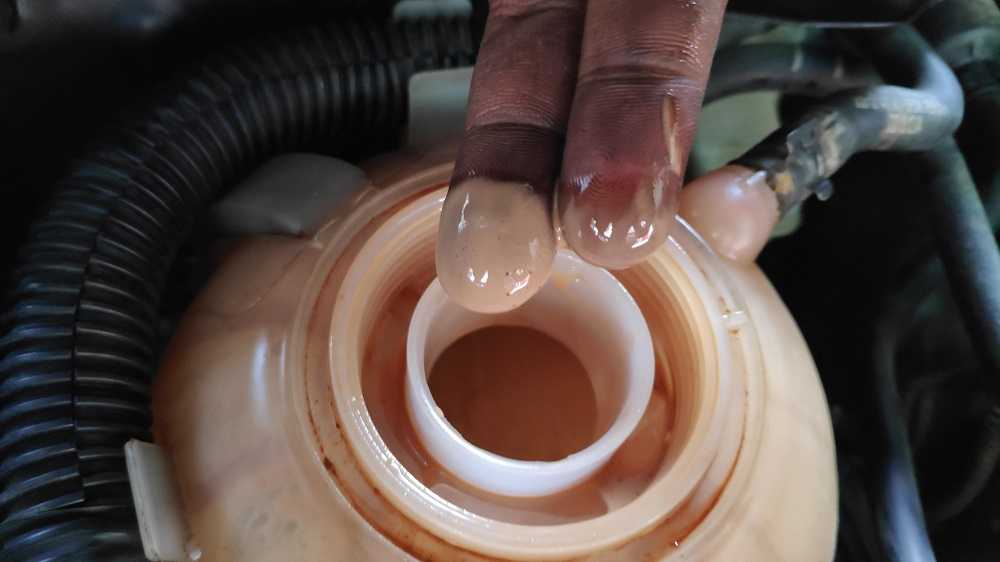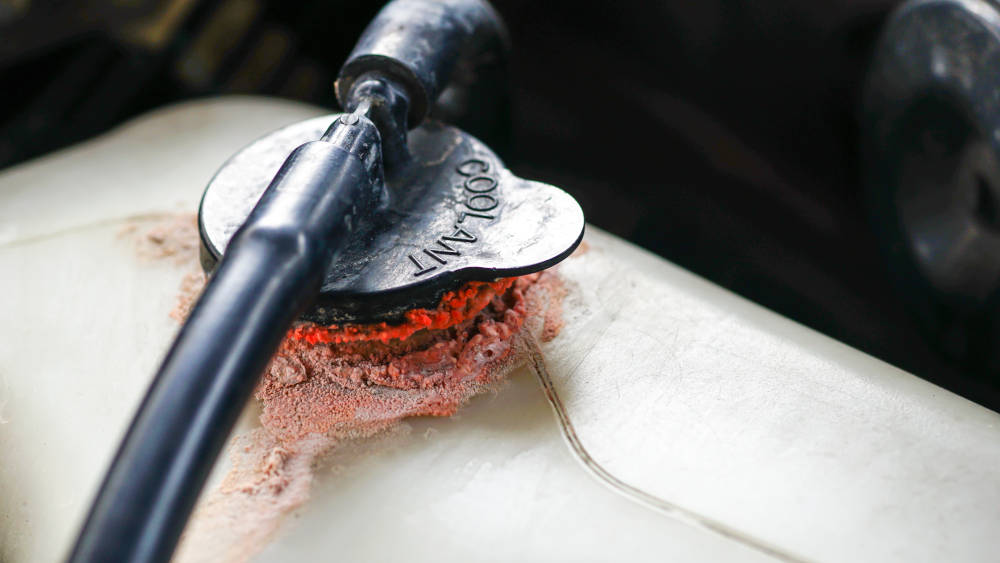Sometimes, you notice during your regular car checks or scheduled maintenance that your car’s coolant level might be low, but you cannot spot any leaks on your driveway. Either way, your car is losing coolant, but there aren’t any visible signs.
Why is this important? Catching such symptoms early will allow you to avoid any major repairs in the future, as not all leaks have your classic ‘puddle of liquid’, but they are leaks, so you should find the cause and fix it.
There are a number of things that might be wrong or might be going on. Let’s take them one by one.
#1: The Coolant leak is too small to notice
Believe it or not, your car could lose coolant, but not enough to be noticeable, even if it’s a bad hose. Leaks that are pinhole-sized may only cause drops of coolant to get out per month. You’ll never see a puddle if you drive your car consistently (daily or at least a couple of times per month).
Based on the leak’s location, your coolant can escape as a liquid or steam. Coolant is a mix of 50/50 antifreeze and water. And that means it can evaporate quite quickly if it drips on hot engine components.
Something to look out for, are amounts of white residue left behind in specific areas of your engine’s compartment – areas that have coolant hoses around or over them. This can be an indicator that something like coolant evaporation might happen and that a leak is nearby. If you suspect something like this, clean that area and take a picture of that specific spot. Be sure to check it again after a long car trip or after a couple of days/weeks.
#2 A leak in the head gasket
Your car’s head gasket is… a gasket that seals the link between your engine block and the cylinder head, and it allows coolant to pass through. There’s a good chance that if your coolant level is very low with no visible leaks, your head gasket may be cracked. This issue is sadly quite common. Those gaskets are prone to breaking, especially in some particular engines.
As usually, head gaskets are internal, which means coolant seeps into the combustion chamber and burns up – so no puddle on the ground.
The coolant being burned up will exit in the form of residues through the exhaust system and out the tailpipe of your car as white smoke even when the car is at operating temperature (engine is heated up, not cold anymore).
Coolant may also mix with the engine’s oil, giving it a milky appearance when opening up the oil filler cap (or mayonnaise on the oil filler cap as some people describe it). Be careful not to panic if you only ever drive short distances – sometimes, it’s just condensation. An easy way to check this if this is the only symptom, just drive about 100/200 miles. Short journeys coupled with cold weather can make your car take forever to warm up properly.

Besides this, other symptoms of a blown head gasket can include (but it’s not mandatory): overheating, engine knocking, coolant bubbling in the tank, and misfiring.
Driving around with a malfunctioning or blown head gasket is not recommended. Fix it ASAP.
#3 Check your interior! Heater core damaged
If your heater core is leaking coolant, it will most of the time drip somewhere down from under the dashboard – on the passenger side. And this can cause your coolant level to get low.
If the leak is very small, you might only notice a tiny trace of antifreeze under the dashboard. However, you can also find a sizeable puddle that went unnoticed – this will most likely form when the engine is cool.
So if you notice coolant around the dashboard on the passenger side, it’s most likely the heater core. Get it fixed!
#4 Bad radiator cap or bad coolant reservoir cap
No leak but the coolant keeps disappearing. It might just be the radiator cap!
The radiator’s job is to cool hot antifreeze as it flows through. If the radiator cap is not sealing properly, pressurized coolant might seep out as steam – and yes, it can be unnoticeably while driving as it doesn’t have to be a lot of steam like in the movies.
A leaky radiator cap can cause the radiator hose to collapse in rare cases, and that can restrict coolant flow and overheat the engine.
An easy sign you might notice if coolant leaks from the radiator cap is a sweet scent coming from the engine or around the cap.

Similarly, it can be from the coolant reservoir cap. This should be noticeable visibly on the reservoir in some form or another, even if there is no actual puddle of coolant under your car.
#5 Turbocharged car? Check the turbo seals
If the seals between the compressor and the engine are worn, they may leak into the turbo and combustion chambers. Just like a blown head gasket, turbo seals are usually internal -> colant leaks not visible.
Some signs of turbo seal leaks: reduced engine power, thining noises from the turbocharger, and sometimes a check engine light on the dash or a turbo boost indicator.
Detecting leaks when nothing works
A great way of finding coolant leaks is Coolant Leak Detectors UV Dyes. After the dye circulates through your car’s cooling system, any leaks will illuminate under a black light. Neat!
Be careful, though, UV dyes don’t work for internal leaks. For internal leaks, you’ll most likely need to perform a leak-down test. A leak-down test involves blowing compressed air into each cylinder and measuring how much escapes. There are a lot of great tutorials online on how to do this and what parts you need.
Conclusion
Sometimes you’re lucky, and the leaks are easy to spot. Sometimes it gets complicated.
If you are unsure or not willing to fix a leak or change the coolant in your car by yourself, not even with a service manual, I urge you to get to a mechanic. Coolant leaks are serious, and even if right now there are minor leaks, you don’t want them to turn into something bigger/costlier at just the wrong time (as problems tend to appear right when you need them the least).


Comments are closed.